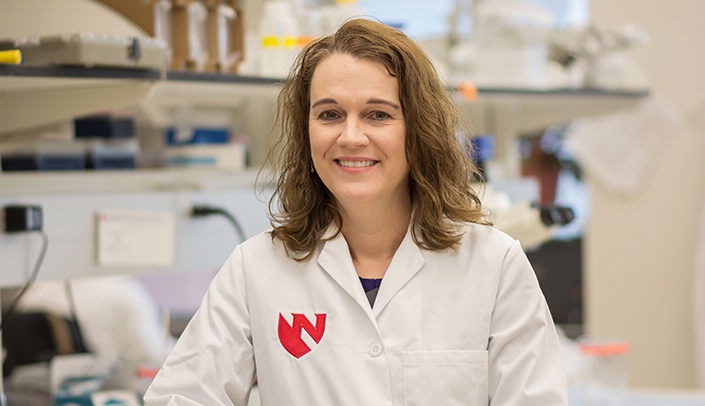This is a story about Tammy Kielian, Ph.D., whose study of staphylococcal infections in the brain prepared her for when fate stepped in and took her down a seemingly unrelated path.
When her niece was diagnosed with juvenile Batten disease, a rare, fatal neurodegenerative disorder, Dr. Kielian threw herself into developing a cure.
What seemed like divergent research interests became united by the role innate immunity plays in each disease.
"United by an overarching interest in the immunological aspects of each disease with a focus on the brain," Dr. Kielian said.
With an emphasis for a novel therapy, Dr. Kielian’s laboratory developed, through a collaboration, a gene therapy that is now licensed by a biopharmaceutical company. A unique delivery system was designed to get this gene therapy through the blood-brain barrier with a single IV injection.
And in preclinical study of animal models, it appears to be working. "Motor defects are reduced. The degree of inflammation is reduced. There is reduced pathology of the lysosome," Dr. Kielian said. The results were published in a recent edition of The Journal of Neuroscience. Dr. Kielian hopes it is pointed toward Investigational New Drug status, with a Phase I clinical trial for kids within sight.
For a deadly, devastating disease with no treatment or cure, it would be the breakthrough heard ’round the world.
For this breakthrough research and her work with staphylococcal biofilms,
Dr. Kielian, Kommineni Professor of Pathology, was named UNMC’s 11th Scientist Laureate, the medical center’s highest honor for research.
She continues to investigate ways we can fight MRSA, the bacteria/infection that claims the lives of some 11,000-plus people each year. And she’s doing it, again, by studying the immune response.
She’s working on a project with Pfizer, to help understand how immune responses are altered in patients undergoing hip and knee surgeries, which may make them more susceptible to infection.
And her lab identified a suppressive immune cell that inadvertently promotes Staphylococcus aureus biofilm survival. Her team was the first to link this suppressive immune cell as critical for promoting biofilm persistence. It’s now a hot topic in MRSA research.
Most scientists have one niche and mine it for decades. To have two? To start a new one?
That took support from UNMC, which offered its blessing and more. From her department chair, Steve Hinrichs, M.D., came help to promote her new work on juvenile Batten disease.
From the people in her lab, who were building careers in staph research, but then said, "We go where our work leads us."
And at home, her husband supports her and her two boys cheer her on.
And late at night, they give her quiet time to sit in her comfy chair and work on puzzles and solutions that no one had ever thought of before.
Web extra
Read Dr. Kielian’s paper in The Journal of Neuroscience
